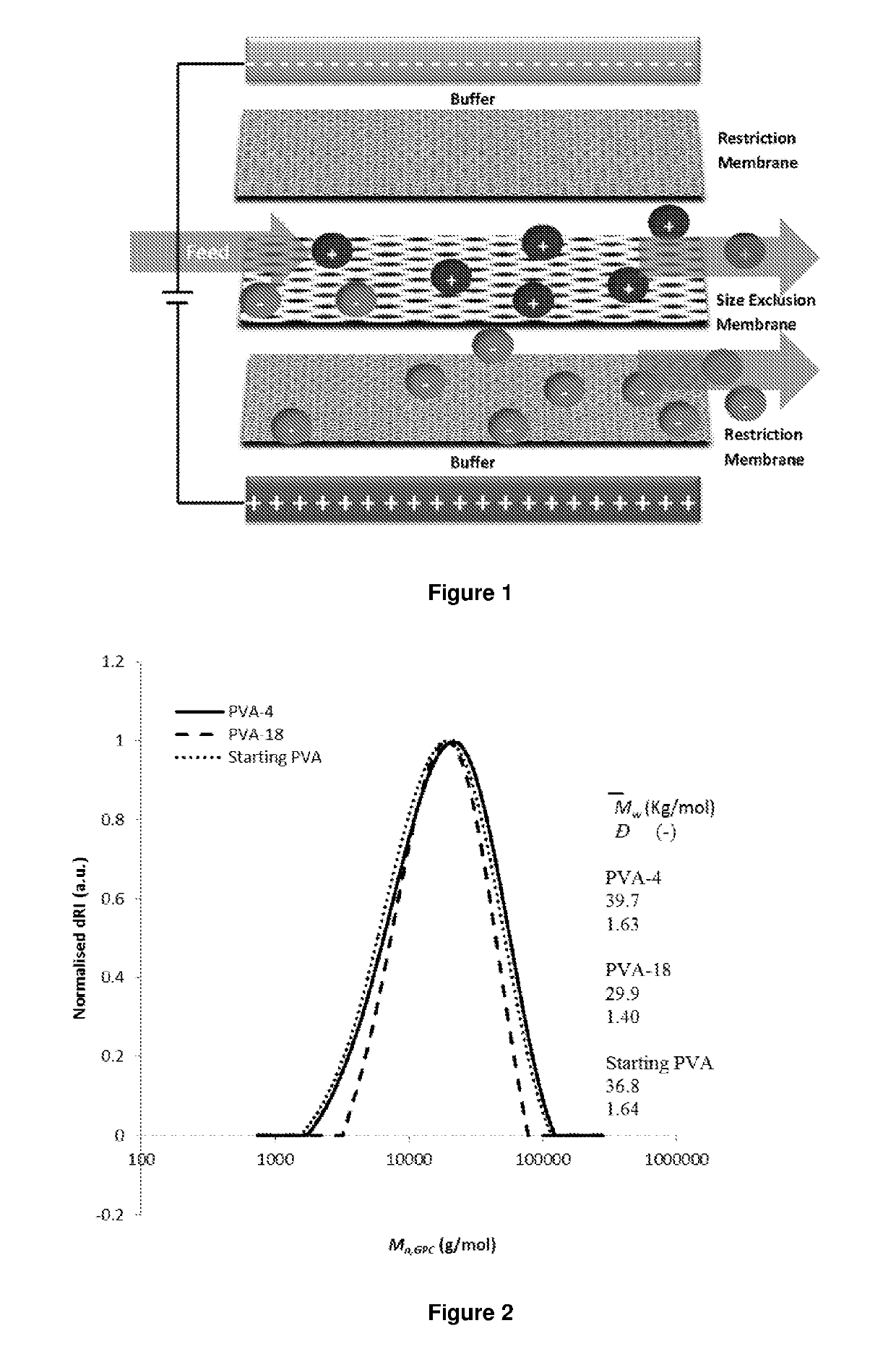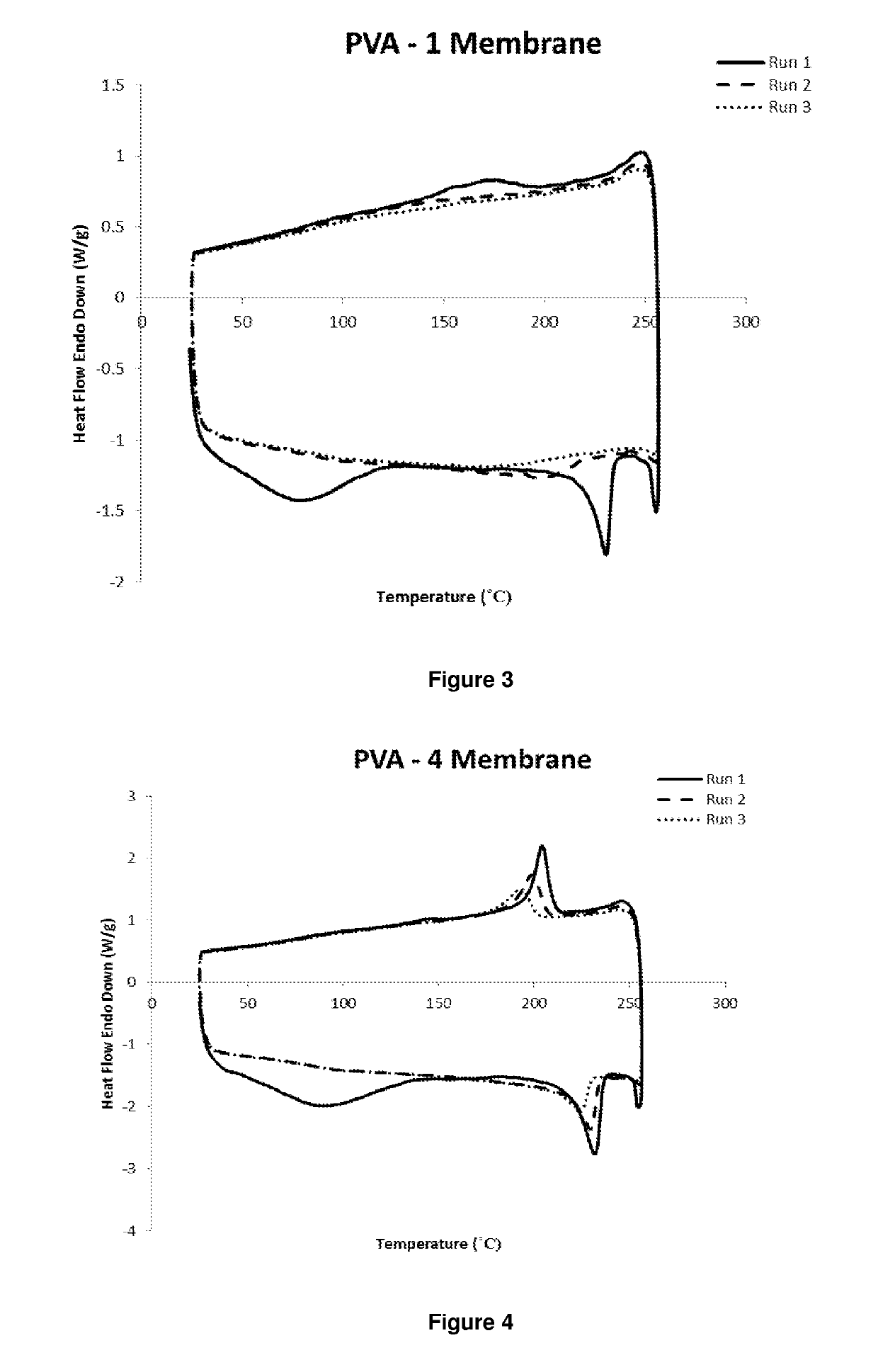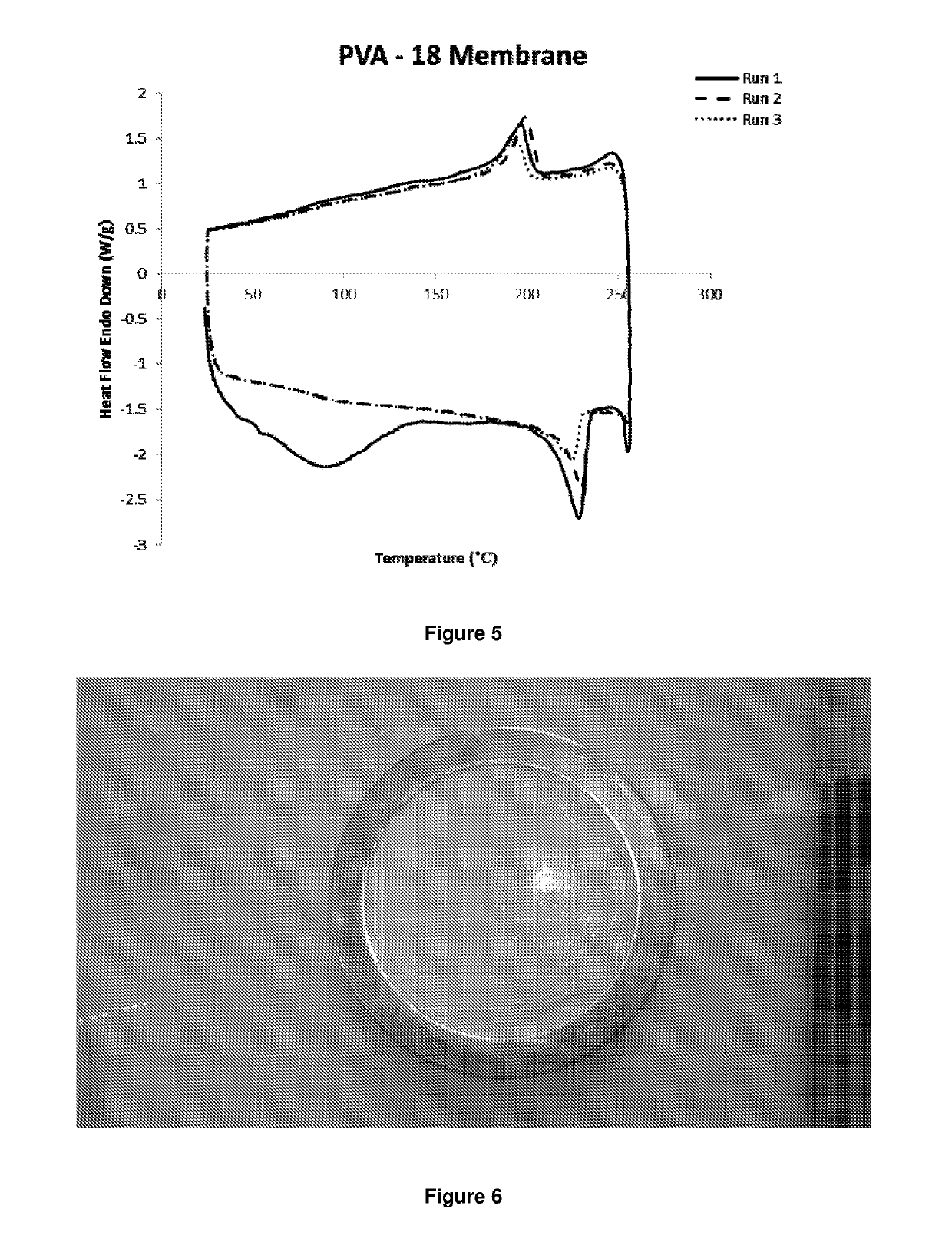Biocompatible polymeric membranes
- Summary
- Abstract
- Description
- Claims
- Application Information
AI Technical Summary
Benefits of technology
Problems solved by technology
Method used
Image
Examples
example 1
Materials and Methods
[0161]Chemicals—PVA89k (89-98 kg / mol), PVA22k (22 kg / mol), PEG8k (6 kg / mol), PEG2k (2 kg / mol) and PVPON10k, PVPON40k, PVPON50k (10, 40 and 55 kg / mol respectively) were obtained from Sigma Aldrich at the highest purity grades available.
[0162]Membrane substrate—Polyethyleneterapthalate (PET) fibre sheets were used as a substrate for casting the membranes. PET fibre sheets are FDA compliant for use in various biological assays and separation processes. The substrates are engineered for excellent fluid transfer properties, have high thermal bonding properties for use in higher temperature applications. Good thermal bonding properties maintain part integrity during normal transportation, storage, and use. The substrates come in sheets or rolls and were purchased from Shangshai Bolting cloth manufacturing, China.
example 2
PVA Restriction Membrane Preparation and Characterisation
[0163]To prepare a PVA stock solution, a known quantity of high-purity water was added to a round bottom flask. The flask was placed in a thermostatic oil bath (90° C.) and stirred under reflux. A known mass of PVA was added until the desired concentration (% w / w) was achieved. The slurry was stirred at 90° C. until no undissolved gel was observed, forming a viscous solution. Following, the solution was stirred an additional 30 min at reflux to ensure complete dissolution of PVA. The solution was cooled slowly to room temperature with gentle mixing, then weighed. If necessary, high-purity water was then added to return the net mass to the starting mass to produce the desired concentration (% w / w). Following, the solution was gently stirred at room temperature for 30 minutes, and then stood overnight without stirring to remove entrained bubbles.
[0164]Stock solutions of PEG and PVPON in water were prepared by dissolving appropri...
example 3
PVA Separation Membrane (Without Support Substrate) Preparation and Characterisation
[0170]PVA, PEG and PVPON stock solutions were prepared as described for restriction PVA membranes.
[0171]PVA separation membranes were prepared by non-solvent induced phase inversion. In the first instance, the membranes with varying pore sizes were prepared without any support substrates for ease of characterisation. The membrane casting solutions were prepared by mixing an appropriate mass of PVA solution (89 kg / mol), additive solution (PEG or PVPON, varied Mw) and high-purity H2O. The solutions were stirred for a minimum of 30 minutes to ensure all components were well mixed, then stood for 30 minutes at room temperature to allow any entrained bubbles to be collected. The membranes were cast into machined wells formed in stainless steel discs (internal diameter=55 mm, well depth=1 mm), air-dried for 5 minutes, and then immersed in a non-solvent coagulation bath (200 mL).
[0172]The composition of the...
PUM
| Property | Measurement | Unit |
|---|---|---|
| Temperature | aaaaa | aaaaa |
| Time | aaaaa | aaaaa |
| Atomic weight | aaaaa | aaaaa |
Abstract
Description
Claims
Application Information
 Login to View More
Login to View More - R&D
- Intellectual Property
- Life Sciences
- Materials
- Tech Scout
- Unparalleled Data Quality
- Higher Quality Content
- 60% Fewer Hallucinations
Browse by: Latest US Patents, China's latest patents, Technical Efficacy Thesaurus, Application Domain, Technology Topic, Popular Technical Reports.
© 2025 PatSnap. All rights reserved.Legal|Privacy policy|Modern Slavery Act Transparency Statement|Sitemap|About US| Contact US: help@patsnap.com



